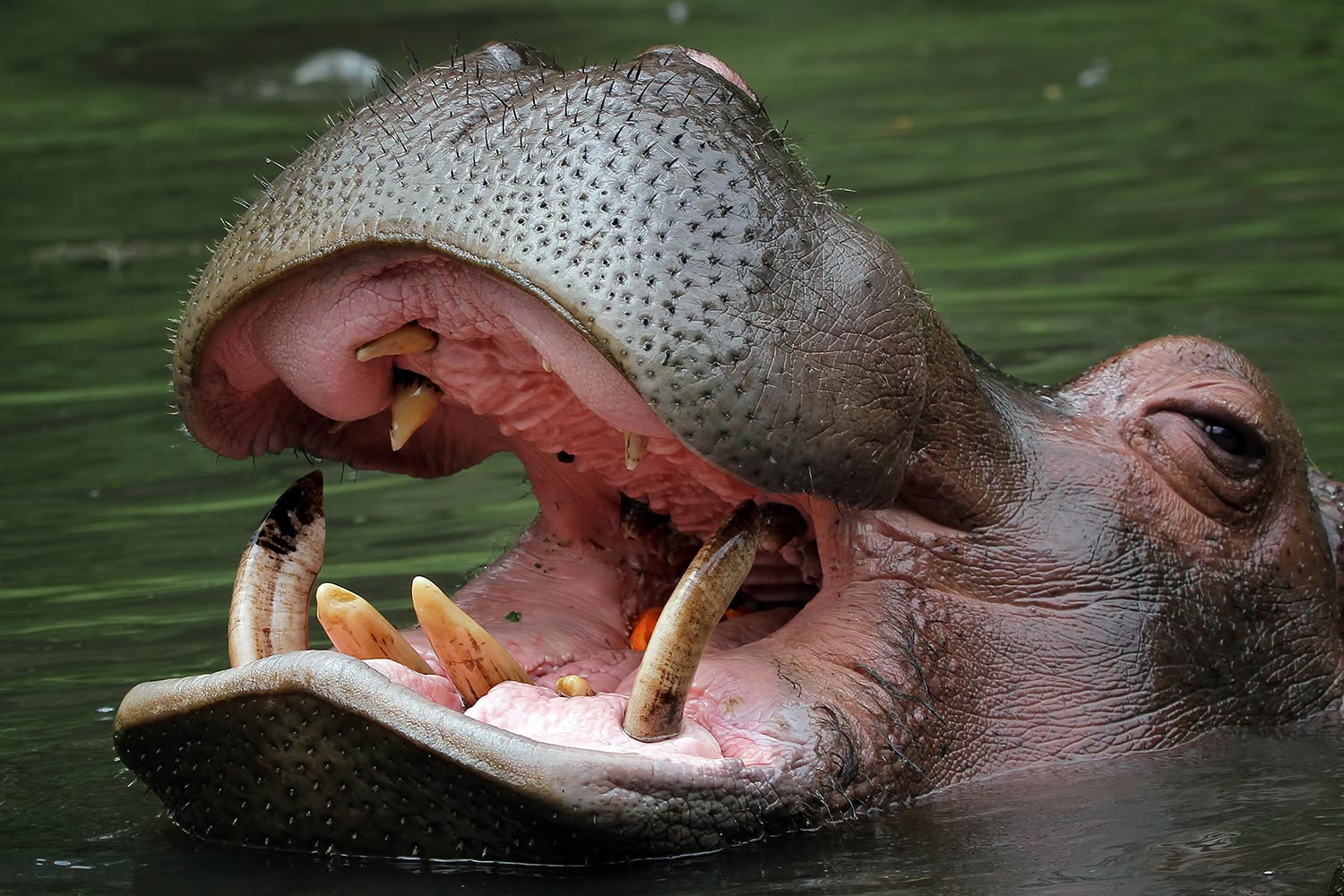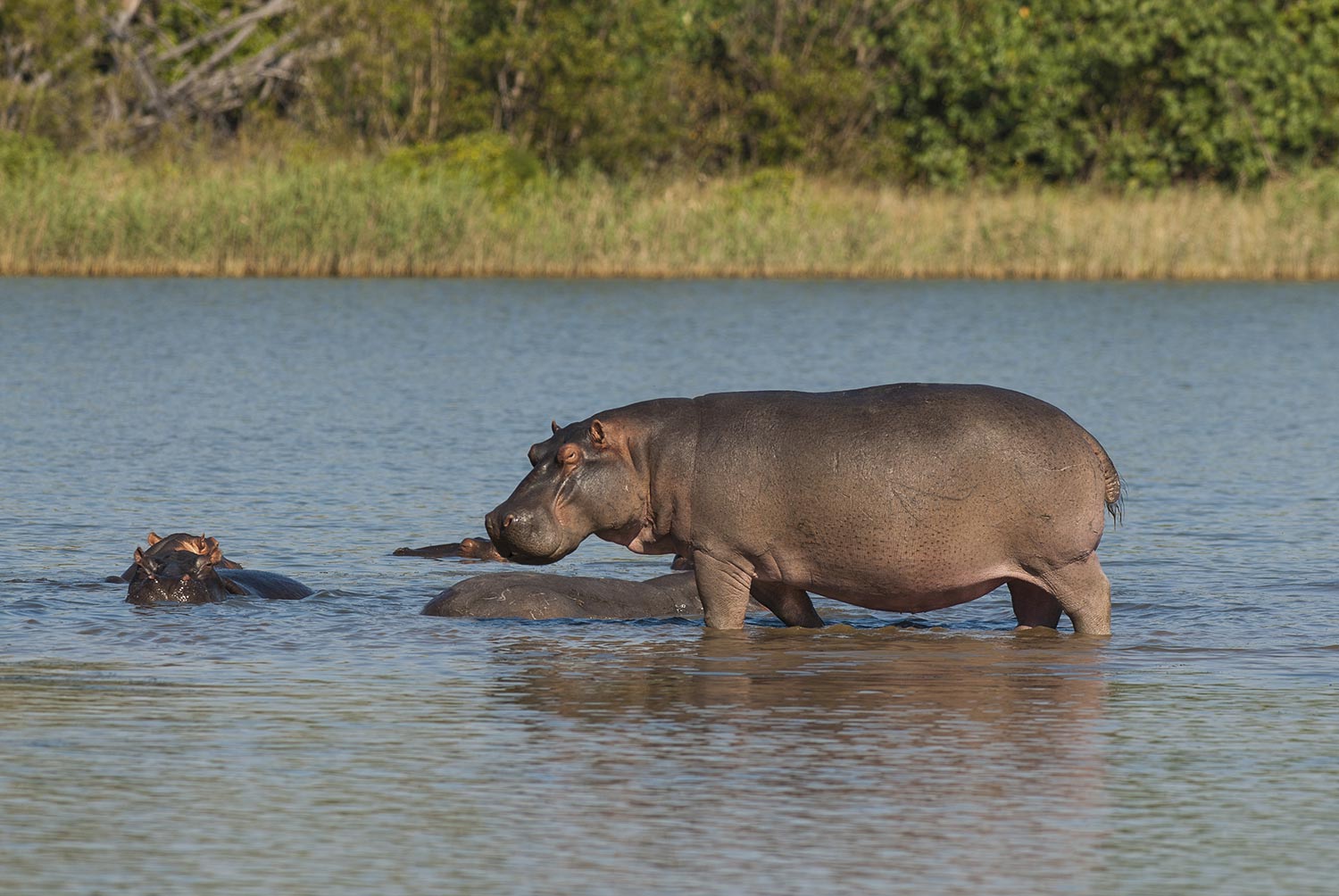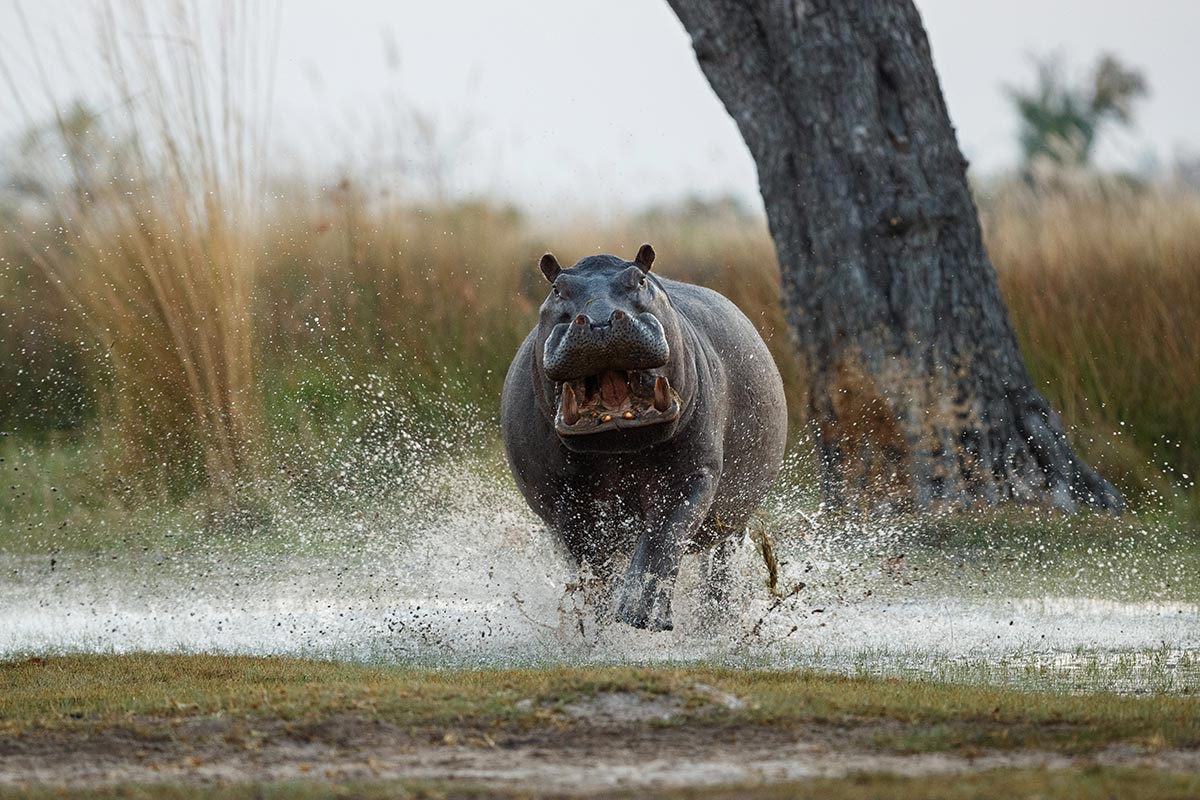Did you know “Kiboko” means hippopotamus in Swahili? It’s the perfect name for this lovable, water-loving friend.
Kiboko isn’t just any hippo he’s a symbol of joy, friendship, and wild wonder. With his big heart and playful personality, he turns every puddle into a party and every day into a new adventure. Whether he’s floating lazily in the river or leading a conga line of critters along the shore, Kiboko’s positive energy is simply contagious.
Bring home Kiboko and let the adventures begin because every great journey starts with a friend who cares.
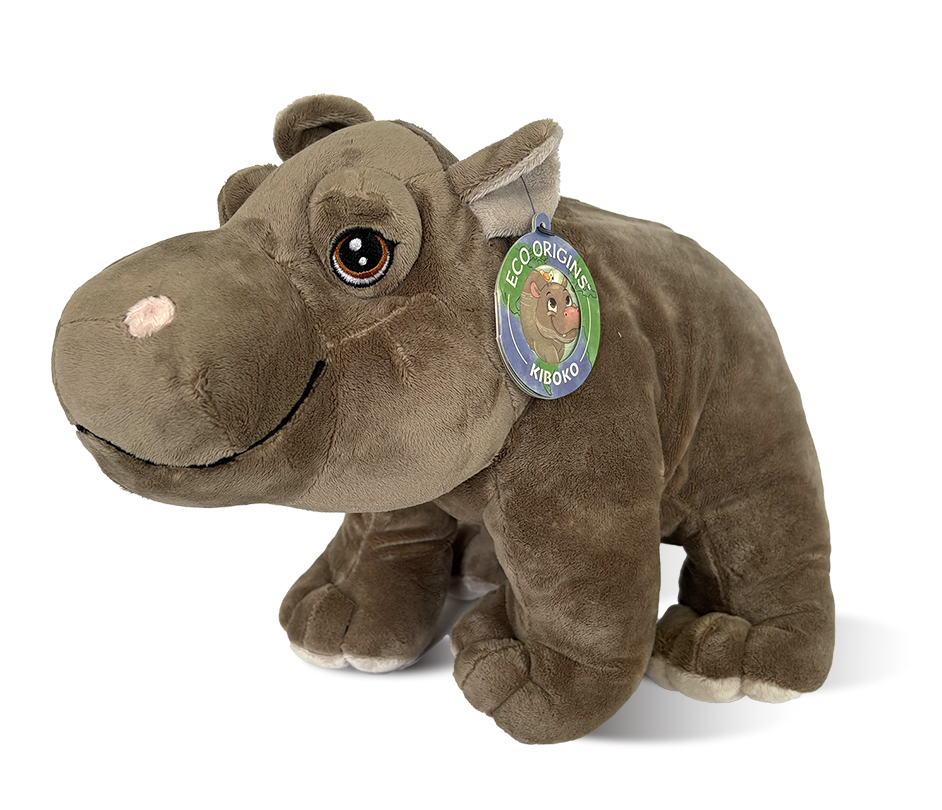
Origin
These massive mammals are believed to have diverged from their closest relatives, the cetaceans (whales and dolphins), around 55 million years ago. Over time, they adapted to a semi-aquatic lifestyle in the rivers and lakes of Africa, where they thrive today.
Risk Level
Hippos need our help to stay safe. Their homes, like rivers and lakes, are getting smaller because of people and climate changes. Plus, some people hunt them, which isn’t good for hippos.
Species
Did you know there are two types of hippos? There’s the common hippopotamus, which is the big one you might see in pictures, and then there’s the pygmy hippopotamus, which is much smaller and likes to live in forests. Both types are important to nature, helping to keep their homes healthy and balanced
Status
The official status of the hippo is “Vulnerable,” which means they are at risk of becoming endangered if things don’t improve soon. The International Union for Conservation of Nature (IUCN) tracks their numbers, and hippos have been declining , sometimes dropping as much as 20% in a little over a decade, mainly due to habitat loss, climate change, drought, poaching, and the international trade in their parts like teeth, skin, and meat.
Why is ‘Kiboko’ important to the eco-system?
Kiboko the hippo is super important to the ecosystem because hippos like him act as giant ecosystem helpers! First, hippos spend a lot of time in rivers and lakes, where their movement creates paths in the water. These paths help other animals find water and keep rivers healthy by improving water circulation. But that’s just the start! Hippos also play a huge role by adding nutrients to the water with their dung, which feeds tiny creatures like insects and helps fish grow. This makes the whole river food web stronger and supports lots of wildlife, from birds to crocodiles.
On land, hippos create special grazing areas by eating grass, which helps different plants grow and even affects how wildfires move through the area. Some scientists even call hippos “ecosystem engineers” because of all the ways they shape the land and water around them. Without hippos like Kiboko, entire rivers and the animals that depend on them could suffer.
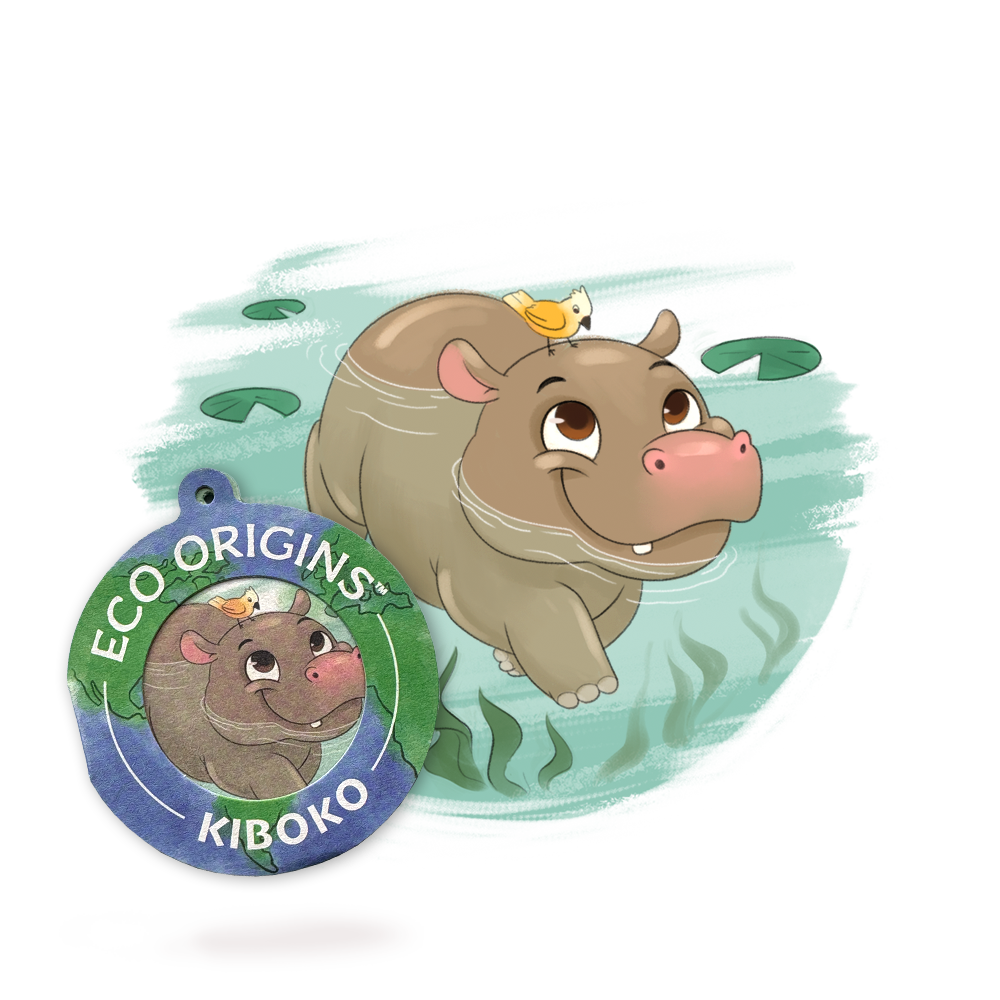
Measuring the Risk of Extinction
A species is considered critically endangered if it has lost 80% or more of its geographic range, and has a greater than 50% chance of extinction over the next 10–100 years.
According to the IUCN Red List, the Critically Endangered status applies to the Pygmy Hippopotamus (Choeropsis liberiensis). This elusive and forest-dwelling species faces an extremely high risk of extinction in the wild due to habitat loss, deforestation, and hunting. With fewer than 2,500 mature individuals estimated to remain, urgent conservation efforts are needed to protect this rare and vulnerable relative of the common hippo.
A species is considered endangered if it has lost more than half of its geographic range, and has a greater than 20% chance of extinction over the next 10–100 years.
According to the IUCN Red List, the Common Hippopotamus (Hippopotamus amphibius) is classified as Endangered. Although still found across parts of sub-Saharan Africa, their populations are declining due to habitat loss, illegal hunting for meat and ivory (from their teeth), and increasing human-wildlife conflict. It’s estimated that only 115,000 to 130,000 individuals remain in the wild, making conservation efforts vital to ensure their survival.
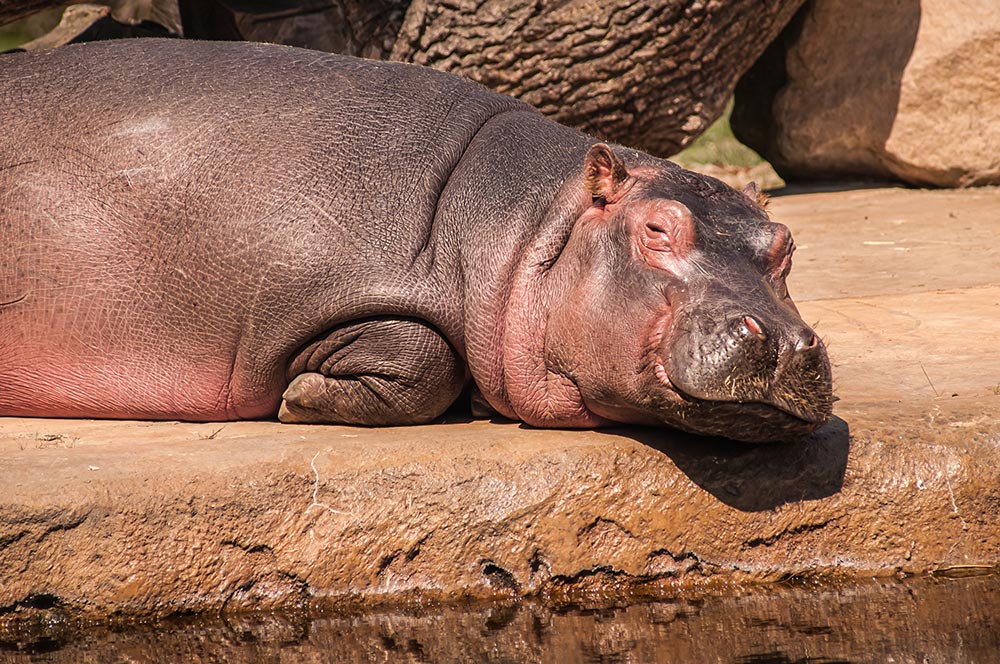
A species is considered vulnerable if there is a greater than 10% chance that it goes extinct in the wild within 100 years.
According to the IUCN Red List, hippos are currently listed as Vulnerable, meaning they face a high risk of extinction in the wild. While populations of the Common Hippopotamus (Hippopotamus amphibius) are still relatively widespread, they are decreasing due to poaching for ivory and meat and loss of freshwater habitats. Without stronger protection and sustainable conservation measures, their numbers could decline further, pushing them closer to endangerment
A species is close to meeting the definition of endangered, vulnerable, or critically endangered based on recent trends.
According to the IUCN Red List, hippos classified as Near Threatened are not currently endangered but are close to qualifying for a threatened category in the near future. This means their populations are facing pressures such as habitat degradation, water scarcity, and poaching, which could lead to rapid declines if not addressed. Continued monitoring and proactive conservation are essential to prevent further risk.
A species is widespread, abundant, and not threatened with extinction.
According to the IUCN Red List, no hippo species is currently classified as Least Concern. Both the Common Hippopotamus and the Pygmy Hippopotamus face significant threats and are listed as Endangered and Critically Endangered, respectively. This highlights the urgent need for conservation efforts to protect all hippo species and their habitats.
Measuring the Risk of Extinction
A species is considered critically endangered if it has lost 80% or more of its geographic range, and has a greater than 50% chance of extinction over the next 10–100 years.
According to the IUCN Red List, the Critically Endangered status applies to the Pygmy Hippopotamus (Choeropsis liberiensis). This elusive and forest-dwelling species faces an extremely high risk of extinction in the wild due to habitat loss, deforestation, and hunting. With fewer than 2,500 mature individuals estimated to remain, urgent conservation efforts are needed to protect this rare and vulnerable relative of the common hippo.
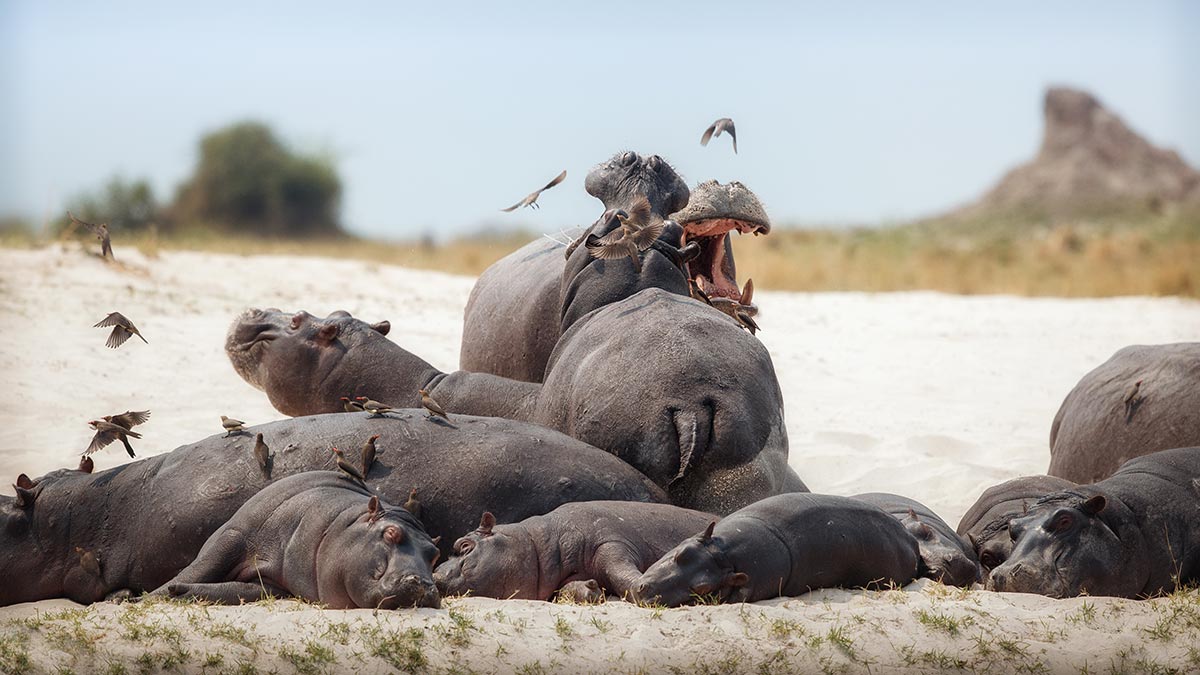
A species is considered endangered if it has lost more than half of its geographic range, and has a greater than 20% chance of extinction over the next 10–100 years.
According to the IUCN Red List, the Common Hippopotamus (Hippopotamus amphibius) is classified as Endangered. Although still found across parts of sub-Saharan Africa, their populations are declining due to habitat loss, illegal hunting for meat and ivory (from their teeth), and increasing human-wildlife conflict. It’s estimated that only 115,000 to 130,000 individuals remain in the wild, making conservation efforts vital to ensure their survival.
A species is considered vulnerable if there is a greater than 10% chance that it goes extinct in the wild within 100 years.
According to the IUCN Red List, hippos are currently listed as Vulnerable, meaning they face a high risk of extinction in the wild. While populations of the Common Hippopotamus (Hippopotamus amphibius) are still relatively widespread, they are decreasing due to poaching for ivory and meat and loss of freshwater habitats. Without stronger protection and sustainable conservation measures, their numbers could decline further, pushing them closer to endangerment
According to the IUCN Red List, hippos classified as Near Threatened are not currently endangered but are close to qualifying for a threatened category in the near future. This means their populations are facing pressures such as habitat degradation, water scarcity, and poaching, which could lead to rapid declines if not addressed. Continued monitoring and proactive conservation are essential to prevent further risk.
According to the IUCN Red List, no hippo species is currently classified as Least Concern. Both the Common Hippopotamus and the Pygmy Hippopotamus face significant threats and are listed as Endangered and Critically Endangered, respectively. This highlights the urgent need for conservation efforts to protect all hippo species and their habitats.
100% Recycled: Head to Toe!
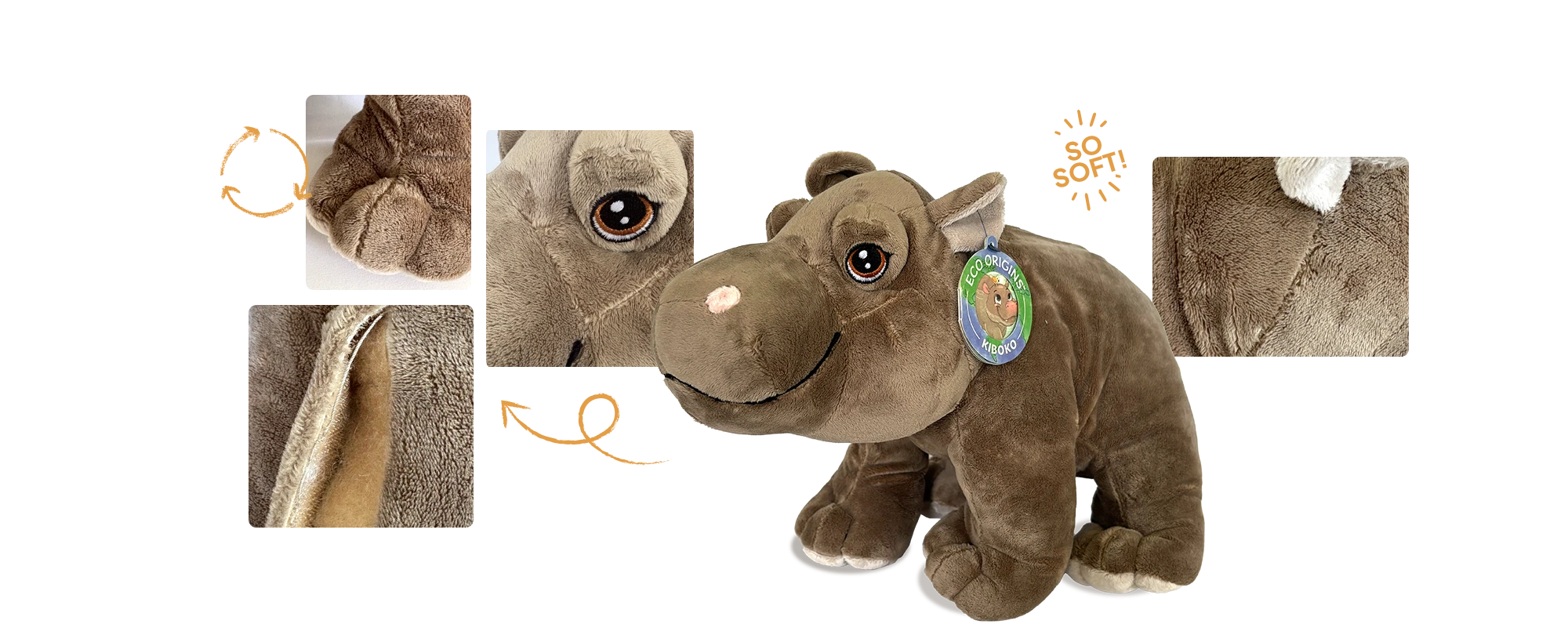
The fabric
We scour the best recycled material fabrics so that our plush always feels premium and soft to the touch!
Hang Tag
The Hangtag is made of recycled paper and attached with a Recycled Polyamide attacher.
Embroidery
Even our threads are recycled! They are extensively used in creation of adorable eyes!
Fiber Fill
What’s inside? Well it’s recycled, super soft, hypo-allergenic fiber!
Call of the Wild: Learning Den
Let’s get inspired to reconnect with nature! Discover cool facts about amazing animals, their families, and why they’re so important for keeping our planet wild and beautiful. It’s time to learn, explore, and take action to protect the incredible creatures that share our world.
4,000 kg
40 km/h
18 Hours
Ready to Pounce?
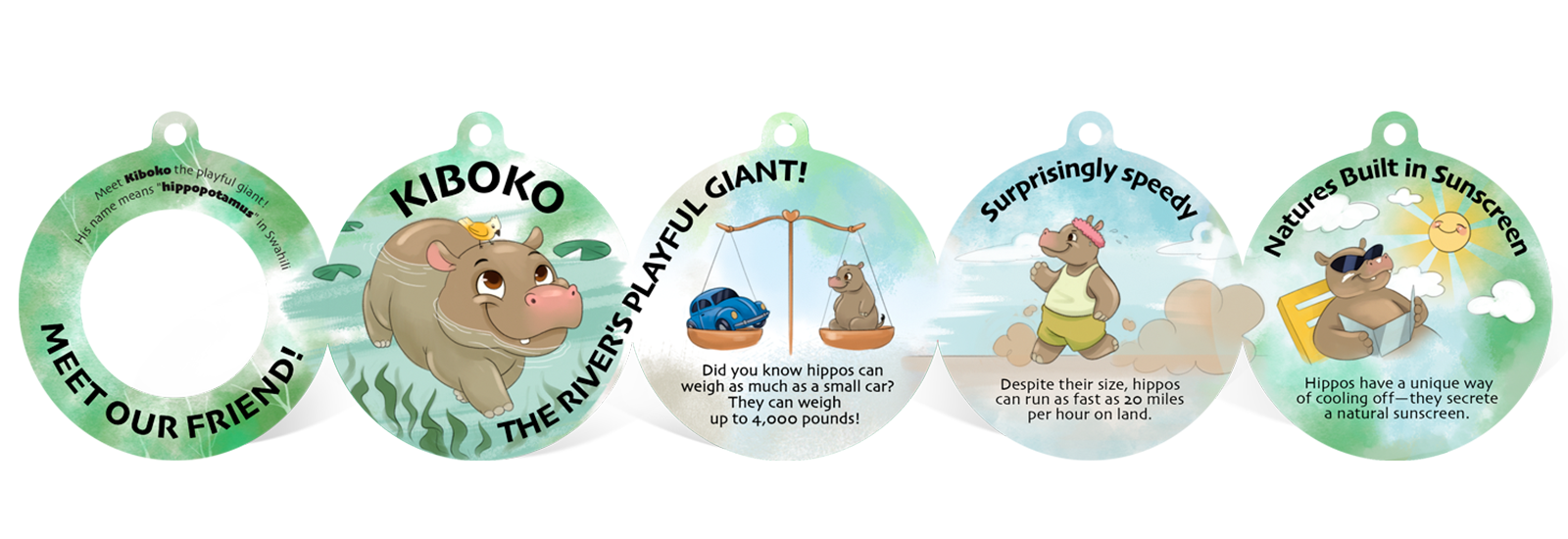
Fun Facts: Nature Nuggets!
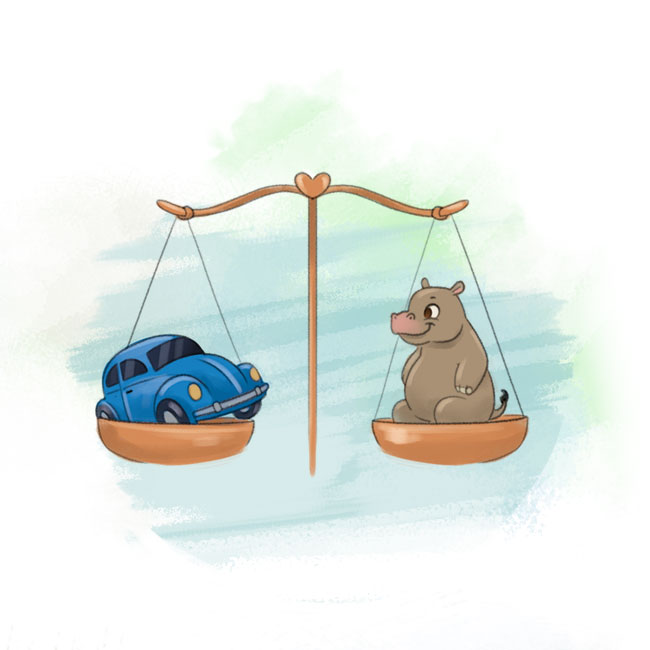
Did you know hippos can weigh as much as a small car? They can weigh up to 4,000 pounds!
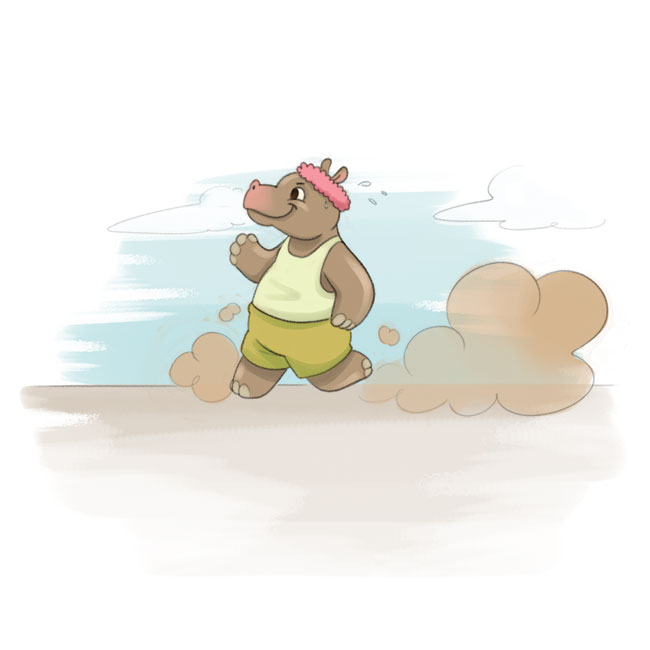
Despite their size, hippos can run as fast as 20 miles per hour on land.

Hippos have a unique way of cooling off—they secrete a natural sunscreen.

